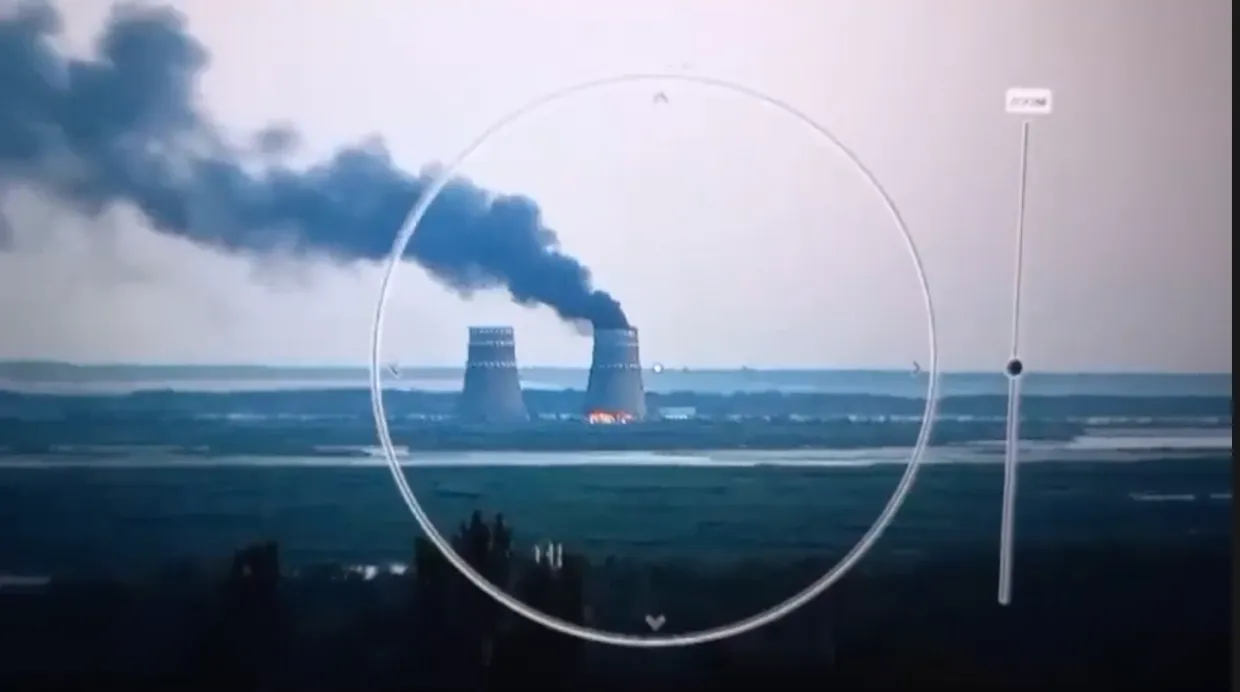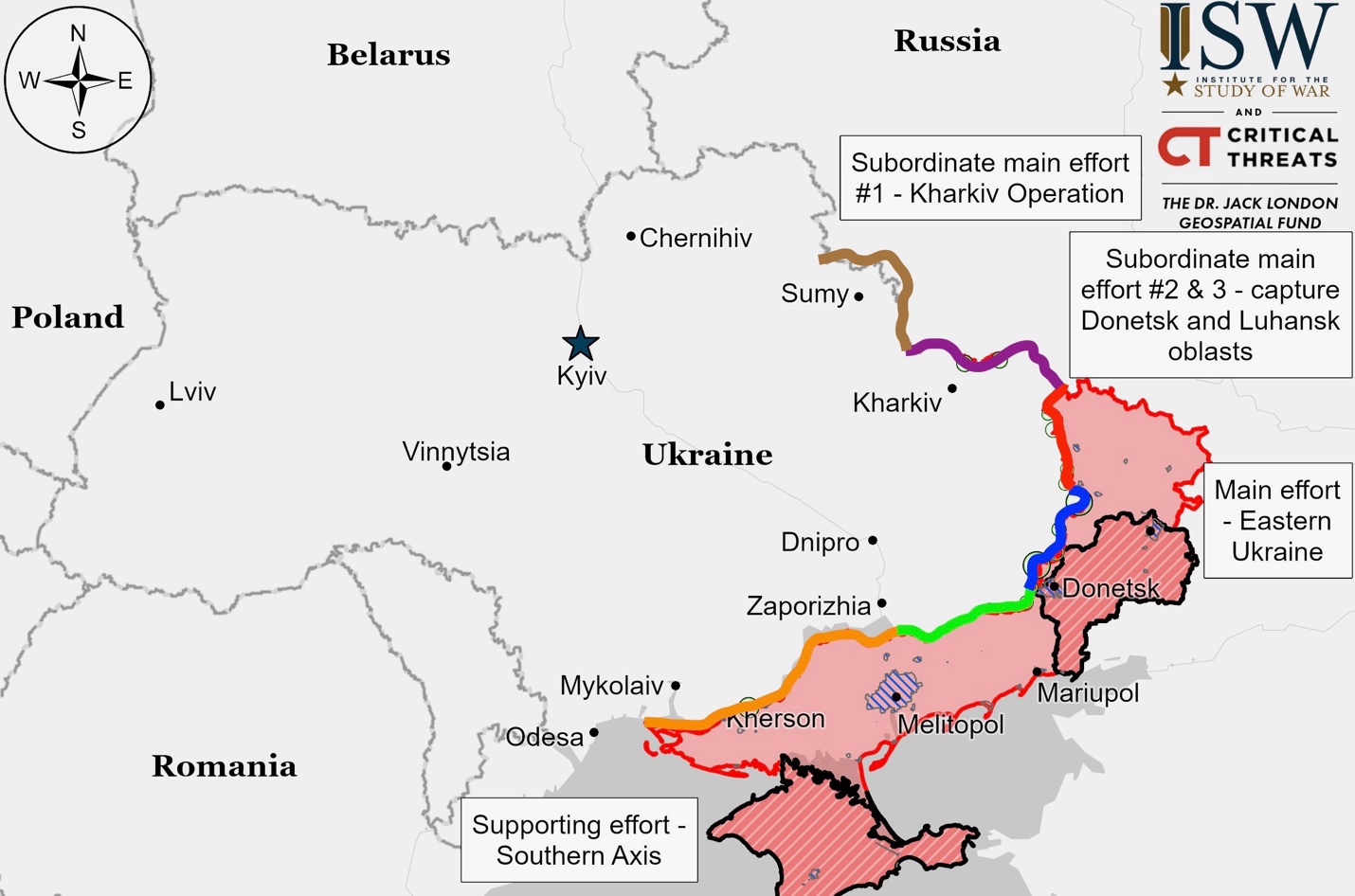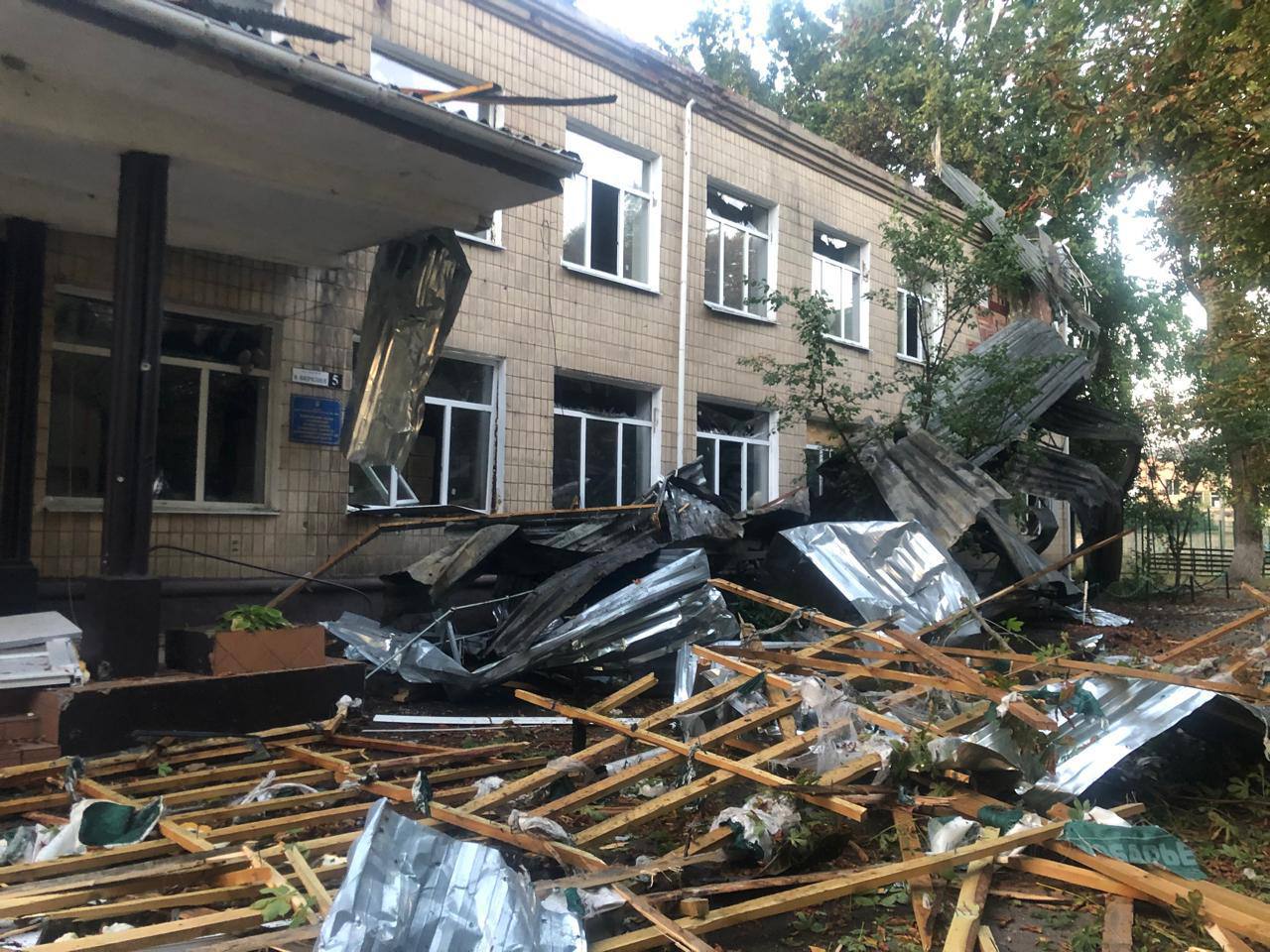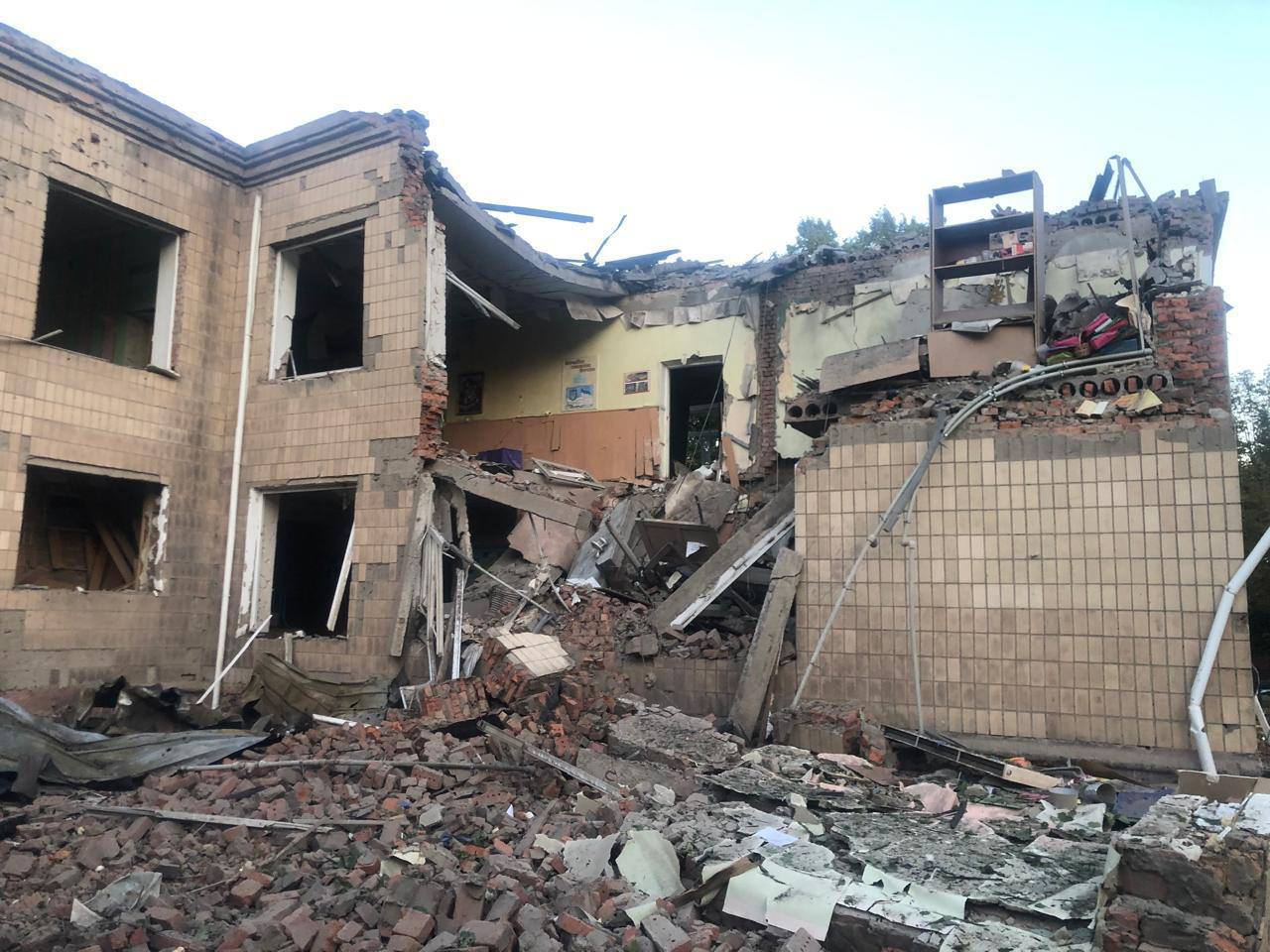Summary of the day: Ukrainian forces have initiated an operation in Kursk Oblast, seizing temporary control and challenging Russia’s dominant position across the frontline. This advancement into what was considered a dormant border area since Fall 2022 forces Russia to reconsider its military strategy, potentially viewing the thousand-kilometer-long border with northeastern Ukraine as an active frontline needing significant defense resources. Recent geolocated footage and reports from both Russian and Ukrainian sources from August 10 and 11 indicate Ukrainian troops moved westward and northwestward in Kursk Oblast, despite Russian claims of stabilizing the situation. Russia’s response involves deploying battalion and smaller unit levels, struggling with command and control (C2) structures necessary for effective coordination. This has led to confusion and strained Russian C2 capabilities, particularly evident as Russian officials reported Ukrainian forces advanced approximately 25 kilometers into Belovsky Raion overnight, although it remains unclear if they maintained positions there. Meanwhile, Russian forces claim limited and unsuccessful Ukrainian cross-border incursions into western Belgorod Oblast. Ukrainian President Volodymyr Zelensky and a top defense official have acknowledged these movements, noting a decrease in Russian assault intensity in eastern Ukraine but overall unchanged operational conditions. Russian propaganda is now leveraging these developments to boost their military recruitment and readiness efforts.
Picture of the day:
 A fire at the Russian-occupied Zaporizhzhia Nuclear Power Plant. (Screenshot/President Volodymyr Zelensky/Telegram)
A fire at the Russian-occupied Zaporizhzhia Nuclear Power Plant. (Screenshot/President Volodymyr Zelensky/Telegram)
What Can I Do To Help Ukraine? This is a question I receive all the time. We at Transform Ukraine are building longer-term housing for internally displaced Ukrainians. Visit Rebuild Ukraine for how you can assist in housing a Ukrainian family displaced by the war.
Beyond Ukraine – The March Towards World War
Germany must prepare for a large-scale military conflict within five years, according to Captain Michael Giss, commander of the Hamburg State Command of the German Armed Forces, in an interview with Die Welt. In response to Russia’s invasion of Ukraine, Germany has increased its military budget and defense capabilities. Giss emphasized that while many Germans don’t yet perceive an external threat, the country must be resilient and ready for a potential conventional attack by Russia within five years. He noted that Russia is already engaging in hybrid warfare against NATO, including cyberattacks and disinformation campaigns. Germany has been working with NATO on a national military strategy, “Operation Plan Germany,” to address these threats.
Situation On The Land, Sea, and Air in Ukraine
A top Ukrainian defense official noted that while Russian assaults in eastern Ukraine have slightly decreased in intensity, the overall military situation remains stable despite the ongoing Ukrainian operation in Kursk Oblast. According to the official, Russian troops continue their offensive efforts, particularly in Donetsk Oblast, maintaining pressure on Ukrainian forces without withdrawing troops from eastern Ukraine. The pace of Russian operations, including significant mechanized assaults southwest of Donetsk City, has not significantly changed.
Russian sources reported unsuccessful small-scale Ukrainian incursions into western Belgorod Oblast. According to Russian military bloggers, Ukrainian mechanized groups tried and failed to cross the border near Bezymeno and Kolotilovka, with Russian forces allegedly striking Ukrainian equipment in these areas. However, most Russian reports deny these claims, and there is no geolocated evidence to confirm Ukrainian operations in Belgorod Oblast.
Vadym Mysnyk, spokesperson for the Ukrainian Northern Operational Command, reported that Russian sabotage and reconnaissance groups are still active in the border regions of Sumy and Chernihiv oblasts.

Kursk Front – Initiative Ukraine
Ukrainian forces have launched an operation in Kursk Oblast, temporarily gaining control and disrupting Russia’s longstanding dominance on the frontline. This move has compelled Russia to redeploy resources to an area previously inactive, challenging Russian strategic assumptions about Ukraine’s capabilities. The operation has shifted the dynamics, forcing Russia to adjust its military strategy and disrupting its ability to set the fighting tempo.
Ukraine’s operations in Kursk Oblast are pressuring Russia to reconsider its military strategy along the northeastern border, which it has largely ignored since 2022. This shift could compel Russia to allocate more troops and resources to defend this long stretch of border, impacting its broader military planning. Despite earlier minor cross-border raids by pro-Ukrainian forces, Russia did not see these as significant threats, opting not to reinforce the border to preserve resources for larger conflicts within Ukraine. However, the current incursion poses a more serious challenge, potentially affecting Russian military operations and the stability of Putin’s regime, thus demanding a strategic reassessment of the border’s role in Russian defense planning. The initially sparse military presence and under-equipped fortifications along the border were inadequate to halt Ukrainian movements, highlighting a need for increased manpower and resources. This shift in focus will likely reduce Russia’s flexibility in deploying forces elsewhere, compelling the Russian military to reassess and possibly increase border defenses to deter further Ukrainian incursions, reshaping the dormant frontline into a more active zone of conflict.
Recent reports and geolocated footage from August 10 and 11 show Ukrainian forces advancing in Kursk Oblast, specifically westward and northwestward, despite Russian claims of stabilizing the situation. Ukrainian advances were noted in areas like Snagost, Kremyanoye, and near Korenevo. There are also reports of Ukrainian presence in southern Cherkasskoye Porechnoye, west of Malaya Loknya, and western Sudzha. Contradictory statements arise around Martynovka, with some sources stating Ukrainian reentry and control, while others note ongoing contention. The overall frontline remains dynamic with several areas reported as contested “gray zones.”
In response to the Ukrainian incursion into Kursk Oblast, Russia has scrambled a haphazard force comprised of units likely operating below their full capacity, struggling to establish effective command and control. Ukrainian military observer Kostyantyn Mashovets notes that about 10 to 11 battalions have been redeployed from various areas to Kursk Oblast, including units from the Northern Grouping of Forces in Kharkiv, the 1st Guards Tank Army in the Kupyansk direction, and airborne units within Kursk and from Kherson Oblast. Additional battalions from the Eastern Military District and possibly the 810th Naval Infantry Brigade have also been moved to the region. These reassignments, however, seem disorganized and insufficiently prepared for coordinated operations, revealing weaknesses in the Russian military response.
Russia’s defensive efforts in Kursk Oblast are hampered by the redeployment of battalions and smaller units instead of full brigades, complicating the establishment of effective command and control (C2). These battalions, often just reinforced companies due to shortages, struggle with coordination. Additionally, drone units operate independently due to their mobility, further complicating battlefield awareness. The defense responsibility assigned to the Russian Federal Security Service (FSB) rather than the Ministry of Defense (MoD), alongside the mixed composition of conscripts, FSB personnel, and Rosgvardia elements, adds to the disorganization. Reports indicate that rapid and varied redeployments are causing communication issues among Russian forces, undermining their defensive posture in the region.
Confusion reigns among Russian conscripts in Kursk Oblast due to ineffective command and control (C2), exacerbating challenges for Russian military coordination. At the outset of the Ukrainian operation, conscripts reportedly received no prior orders and were unable to retreat under Ukrainian fire. Efforts are now being made to regroup these conscripts and return them to their units, with reports suggesting around 100 conscripts were in the area as of August 6. Additionally, Russian forces are reportedly reassigning conscripts to combat units to maintain their presence in frontline roles, despite some claims of their withdrawal. This situation could escalate into a political crisis for the Kremlin if it fails to manage conscript casualties effectively.
Ukrainian sabotage and reconnaissance groups entered Russia’s Belovsky district in the Kursk region and briefly advanced up to 25 kilometers into the area, causing significant local panic. Russian officials claim they repelled the incursion, and currently, there are no ongoing conflicts in the area. Military responses from Russia included strikes on Ukrainian equipment near Ozerki and Ivanovsky. Although initial reports suggested a significant Ukrainian breakthrough, these were later scaled down, and no further conflicts have been noted following the initial engagement.
The rapid Ukrainian maneuver in Belovsky Raion highlights ongoing Russian vulnerabilities along the border, indicating a lack of preparedness for further incursions. Ukrainian forces made swift advances without attempting to hold ground, exploiting poorly manned Russian positions. Russia’s focus is currently on stabilizing frontlines near Korenevo and Sudzha, with less attention on reinforcing other border areas. This, combined with persistent command and control issues in Kursk Oblast, hampers effective Russian responses and creates opportunities for Ukrainian forces to exploit these gaps.
As Ukrainian forces advance into Kursk Oblast, Russian troops have started building defensive structures near the Kursk Nuclear Power Plant (KNPP), according to a BBC report. Following Ukraine’s surprise incursion starting August 6, photos suggest Russian forces are digging trenches near the KNPP, located about 80 kilometers from the initial incursion site at Sudzha. The International Atomic Energy Agency (IAEA) has urged both sides to exercise caution to prevent a nuclear incident. Two of KNPP’s six reactors are shut down, two are operational, and two are under construction.
On August 10, Ukrainian President Volodymyr Zelensky confirmed Ukraine’s cross-border operation into Kursk Oblast, marking his first official acknowledgment of the incursion. He reported updates from Commander-in-Chief Colonel General Oleksandr Syrskyi on Ukrainian efforts to advance the conflict into Russian territory. Contrasting reports on the scale of the operation emerged, with a senior Ukrainian official citing thousands of soldiers involved, while Russian General Valery Gerasimov earlier claimed about 1,000 Ukrainian soldiers participated.
Kharkiv Front – Initiative Russia
Russian forces pressed on with their offensive operations in northern Kharkiv Oblast, particularly around Hlyboke and Vovchansk, without any confirmed changes to the frontline.
Luhansk Front – Initiative Russia
Russian forces achieved advances near Kupyansk, continuing their offensive operations along the Kupyansk-Svatove-Kreminna line. Geolocated footage shows Russian progression west of Novoselivske, with additional advances reported north of Pishchane, west of Tabaivka, and south of Berestove. The Ukrainian General Staff highlighted Russian attacks across multiple locations including near Synkivka, Berestove, Stelmakhivka, and the Serebryanske forest area.
Donetsk Front – Initiative Russia
Siversk
Russian forces continued their offensive operations around Siversk, specifically targeting areas northeast near Bilohorivka, east near Verkhnokamyanske, and southeast near Spirne, Ivano-Darivka, and Vyimka.
Chasiv Yar
Russian forces launched offensive operations near Chasiv Yar, targeting areas including the Novyi and Zhovtnevyi microraions, east near Ivanivske, southeast near Klishchiivka, and south near Bila Hora. Despite these efforts, no changes to the frontline were confirmed.
Toretsk
Russian forces conducted offensive operations around Toretsk, targeting areas northeast near Druzhba, east near Pivnichne, southeast near Zalizne, and south near Niu York, with no confirmed changes to the frontline. A claim of Russian advancements in northeastern Druzhba and southwestern Zalizne remains unconfirmed.
Pokrovsk
Russian forces conducted offensive operations in the Pokrovsk direction, targeting areas east near Vozdvyzhenka, Novooleksandrivka, Kalynove, and Hrodivka, and southeast near Novohrodivka, Zhelanne, Orlivka, Mykolaivka, and Karlivka. Despite reports of Russian advances north and west of Nevelske and up to 850 meters into Ivanivka, no confirmed changes to the frontline were reported. Claims of Russian control over Zhelanne, Serhiivka, Ivanivka, and eastern Hrodivka remain unverified.
Southwest of Donetsk City
Russian forces launched a mechanized assault west of Donetsk City and advanced southeast of the city, targeting areas including Krasnohorivka, Heorhiivka, Kostyantynivka, Paraskoviivka, and Vodyane. Geolocated footage shows Russian movements southeast of Vodyane and Ukrainian forces repelling an assault near Heorhiivka, where they reportedly destroyed four Russian vehicles and damaged two. Russian claims of advancements in Krasnohorivka, Kostyantynivka, and near Pobieda remain unconfirmed.
Zaporizhia Front – Initiative Russia
Zaporizhia-Donetsk Border Area
The Ukrainian General Staff reported that Russian forces launched offensive operations near Kermenchyk, southeast of Velyka Novosilka.
Zaporizhia Line
positional fighting occurred in western Zaporizhia Oblast near Robotyne, Novodanylivka, and Mala Tokmachka, with no confirmed changes to the frontline.
Kherson (Dnipro River) Front – Initiative Russia
A fire at the Zaporizhzhia Nuclear Power Plant (ZNPP) in Enerhodar, reportedly set by Russian forces using rubber tires in a cooling tower, has sparked accusations from both sides. Ukrainian officials claim it was a deliberate provocation by Russia, while the Zaporizhia Oblast occupation head blames Ukrainian shelling. Despite the visible smoke, both Ukrainian and occupation officials confirmed the plant is operating normally with no radiation leaks. President Zelensky urged the International Atomic Energy Agency (IAEA) to hold Russia accountable, highlighting the ongoing risks while the plant remains under Russian control. The incident underscores the continued tension over the safety of Europe’s largest nuclear facility, occupied by Russian forces since March 2022.
Russian forces conducted limited ground attacks near Krynky in east Kherson Oblast, with no confirmed changes to the frontline.
Ukraine News
Russian forces launched missile and drone strikes against Ukraine, including four North Korean KN-23 ballistic missiles from Voronezh Oblast and 57 Shahed drones from locations in Krasnodar Krai and Kursk City. Ukrainian Air Force Commander Lieutenant General Mykola Oleshchuk reported that 53 Shahed drones were shot down over various Ukrainian oblasts. Although these missiles targeted Kyiv City, none reached their destination, and fragments from one missile killed two civilians in Brovary, Kyiv Oblast. Additionally, Russian sources claimed to have hit a Ukrainian military storage facility near Poltava City.
President Volodymyr Zelensky stated that missile strikes from Russian border regions like Voronezh Oblast, which resulted in casualties in Kyiv Oblast, warrant a “fair response.” He highlighted that over 50 drones and four missiles were launched by Russian forces overnight on August 10-11. Zelensky emphasized that Ukraine is documenting each strike from areas including Belgorod and Kursk Oblasts and promised retaliation. This statement aligns with Ukrainian military actions, as troops have advanced into Kursk since August 6 and reportedly entered Belgorod Oblast on August 10, prompting Russia to initiate a “counter-terrorism operation” across these border regions. Zelensky confirmed that these military moves aim to push the conflict into Russian territory to “restore justice.”
Zaporizhzhia Oblast Governor Ivan Fedorov announced plans to open some of the six underground schools in Zaporizhzhia and its region by late October, aiming to maintain offline education despite ongoing conflicts. This initiative follows the introduction of underground schools in Kharkiv, where the first such facility was established in a metro station to ensure education continues amid regular attacks. The project, launched in May, includes building five underground schools to protect against the Russian offensive, which has seen heavy fighting about 40 kilometers from Zaporizhzhia. Additionally, since April 1, 24 schools in Zaporizhzhia have adopted a mixed online and offline format due to the safety concerns, with a significant majority of students in front-line regions currently studying online.
Ukrainian Finance Minister Serhiy Marchenko reported in an August 11 interview with the Financial Times that delays in U.S. military aid have significantly impacted Ukraine’s budget, contributing to a deficit nearing a quarter of its GDP, or $43.5 billion. He noted that the slow disbursement of U.S. aid, approved three months ago at $27 billion, has compelled Ukraine to use its funds for immediate ammunition and weapon needs, risking shortages later in the year, including for troop salaries. Amidst these financial strains, Marchenko urged faster release of a $50 billion loan agreed by G7 leaders in June, intended to be financed by interest from $300 billion in frozen Russian assets. This comes as Ukrainian forces face severe shortages on the Donbas front, complicating the defense of cities.
Innocent Victims Of War
The casualty count of civilians in the past 24 hours:
DEATHS: 8 INJURIES: 26
- Russian ballistic missiles, likely Iskander-M or North Korean KN-23, were downed in Kyiv Oblast, with fragments hitting residential buildings in the Brovary district. The attack tragically killed a 35-year-old man and his 4-year-old son, and injured three others, including a 13-year-old.
- A Russian missile strike on the village of Zolochiv in Kharkiv Oblast on August 10 damaged the local House of Children and Youth Creativity, causing a fire on the roof of the two-story building. (Russian War Crime)
- An 87-year-old man was killed in a Russian attack on the village of Lisova Stinka near Kupiansk. (Russian War Crime)
- Russian FPV drones attacked the village of Dniprovskyi in Mykolaiv Oblast, damaging a house and a car, and injuring two men. Later on, Russian forces shelled the town of Ochakiv, injuring four people—two women and two men. One woman was hospitalized. The attack also damaged seven houses and a power line, with fires subsequently extinguished. (Rusian War Crime)
- Russian forces attacked Kramatorsk, Hrodivka, and Stinky in Donetsk Oblast, killing three people and injuring three others. A separate attack on Kramatorsk on the morning of August 11 injured four more people and hit an infrastructure facility.
- In Zaporizhzhia Oblast, Russian forces attacked the Polohy district, killing a 68-year-old man and injuring a 63-year-old woman. (Russian War Crime)
- Russian drone attacks on Kherson injured 10 people, including a 15-year-old boy. In the region, one person was killed, and another was injured over the past day. (Russian War Crime)
- Sumy Oblast experienced 34 explosions, with two people injured in Russian attacks.
 The aftermath of a Russian attack on the village of Zolochiv in Kharkiv Oblast. (Oleh Syniehubov/Telegram)
The aftermath of a Russian attack on the village of Zolochiv in Kharkiv Oblast. (Oleh Syniehubov/Telegram)
 The aftermath of a Russian attack on the village of Zolochiv in Kharkiv Oblast. (Oleh Syniehubov/Telegram)
The aftermath of a Russian attack on the village of Zolochiv in Kharkiv Oblast. (Oleh Syniehubov/Telegram)
Russian Mobilization and Defense Industrial Base
Russian propagandists are using the recent Ukrainian incursion into Kursk Oblast to boost recruitment efforts. Propagandist Vladimir Solovyov claimed that the incident has increased interest among young people, especially those under 30, in joining the military as contract soldiers. However, these claims have not been verified.
On August 9, the Sredna-Nevsky Shipyard launched the Project 12700 Afanasy Ivannikov minesweeper. Admiral Alexander Moiseyev, Commander-in-Chief of the Russian Navy, stated hopes for the vessel to enter service by the end of 2024.
Russia’s Allies
The Belarusian Ministry of Defense announced the deployment of unspecified mechanized units to the border with Ukraine, following President Alexander Lukashenko’s directive to strengthen military presence in the Gomel and Mozyr areas. This move comes after Lukashenko’s claim of shooting down around a dozen Ukrainian drones on the night of August 9 to 10, declaring a response to such “provocations.” However, the Belarusian Hajun Project reported no detection of Ukrainian drones or Belarusian military response during that time. Following these events, Belarus questioned the continued presence of the Ukrainian diplomatic mission in Minsk. Meanwhile, Ukrainian spokesperson Andriy Demchenko confirmed no changes at the border, suggesting Belarus is escalating tensions without evidence of military buildup.
Controlling The Narrative and Russian Propaganda
The Russian Defense Ministry released videos claiming successful strikes against Ukrainian forces in Kursk Oblast, but these videos were filmed elsewhere and earlier, according to the Russian independent outlet The Insider on August 10. Ukraine’s surprise incursion into Russia on August 6 has continued to advance, prompting Russia to declare a state of emergency. The Russian Defense Ministry and state media circulated videos allegedly showing Russian forces repelling Ukrainian troops in Kursk, but The Insider revealed that one video was originally published weeks earlier on July 14, and another was filmed in Donetsk and Luhansk, not Kursk. Despite Russian claims of halting the Ukrainian advance, the Defense Ministry admitted on August 11 that Ukrainian forces had reached villages 25 to 30 kilometers from the border.
Source Material
Institute for the Study of War – understandingwar.org
The Kyiv Independent – kyivindependent.com
Kyiv Post – kyivpost.com
